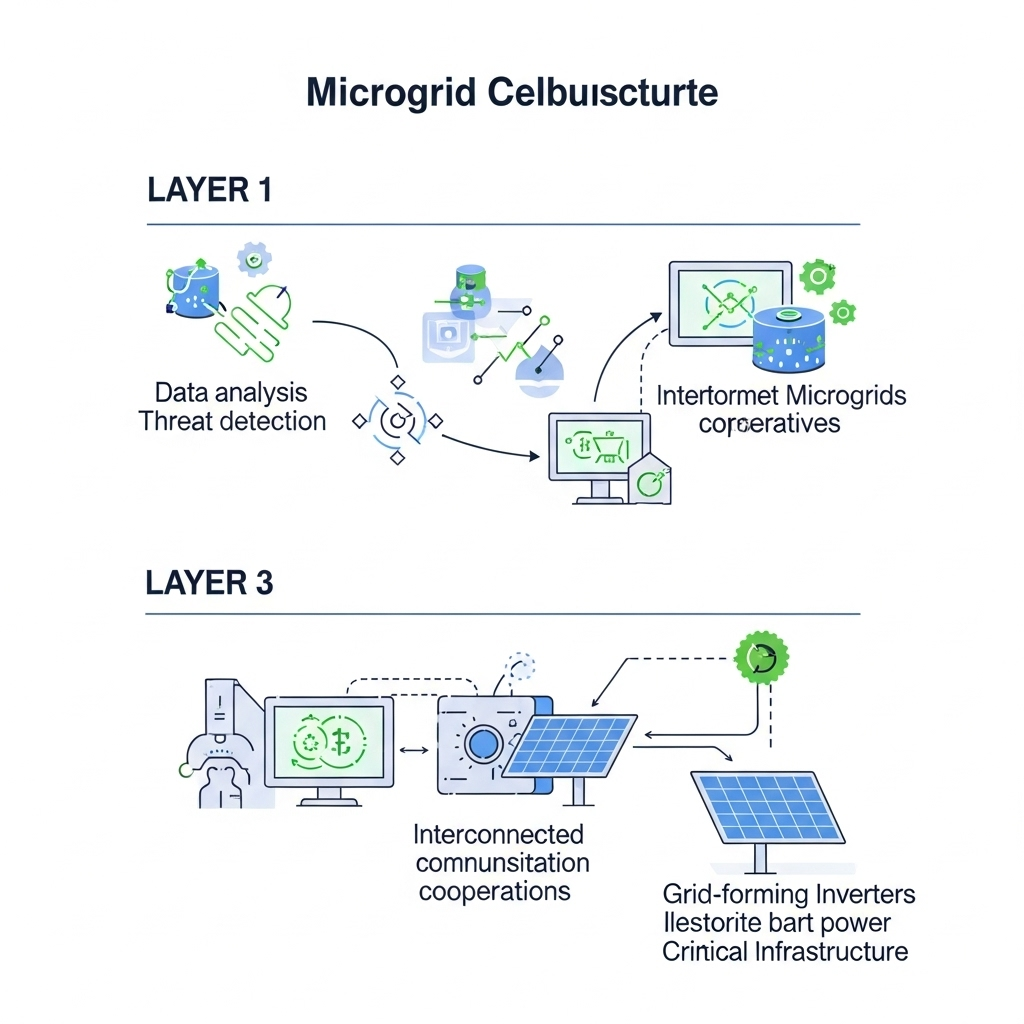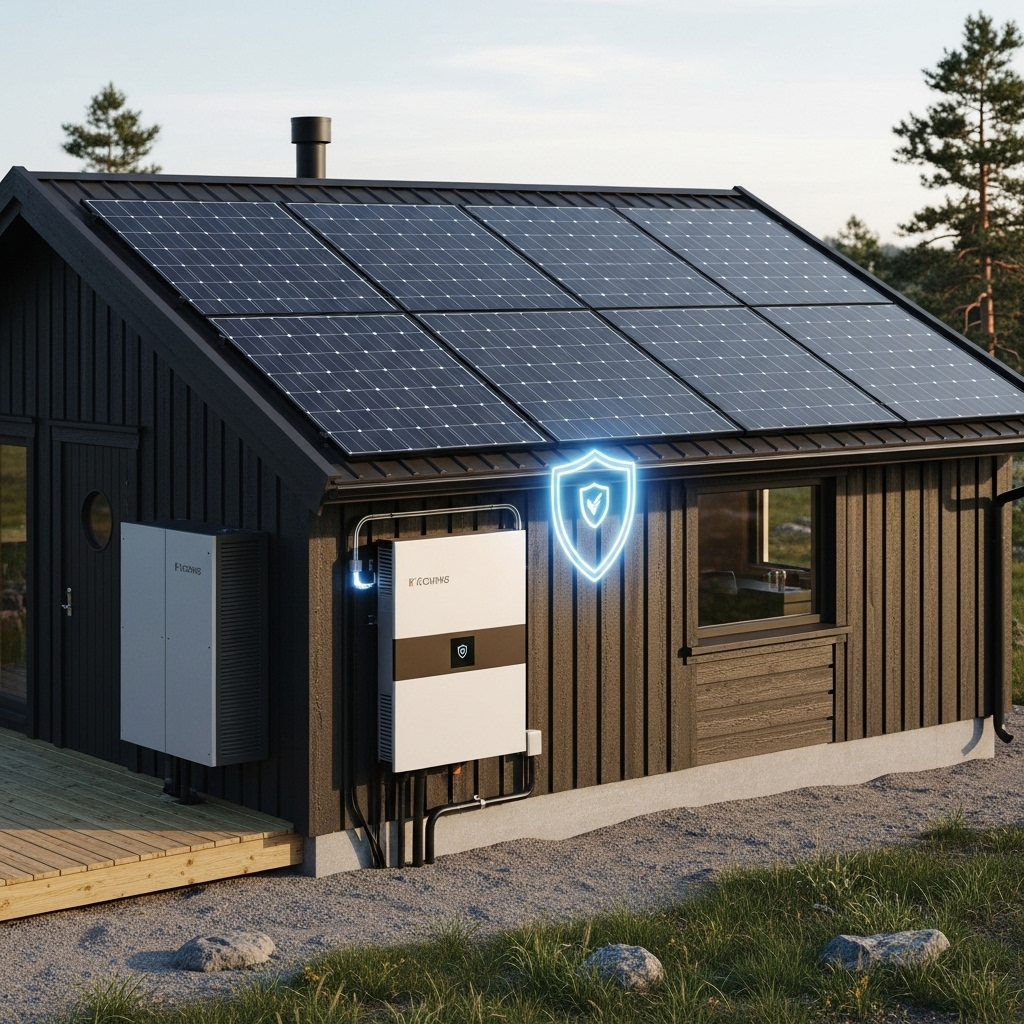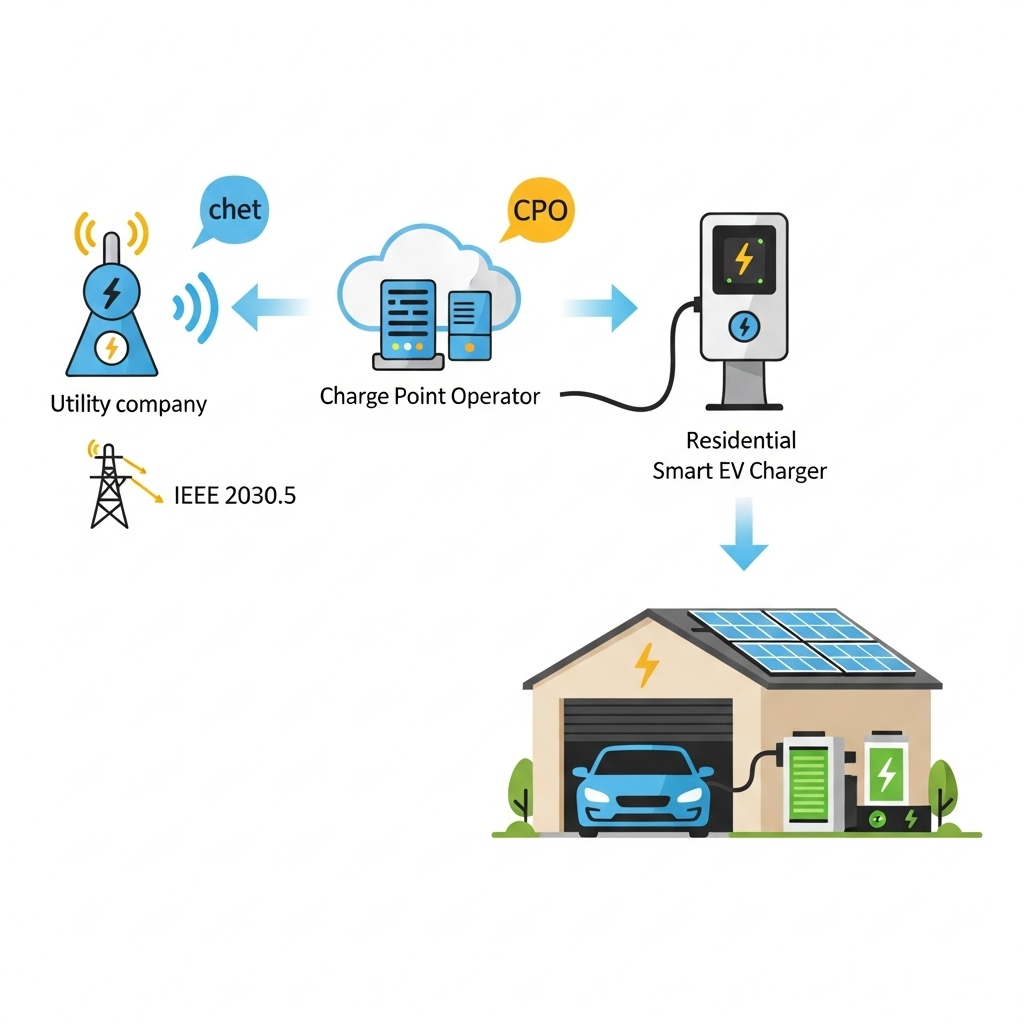As our reliance on electricity grows, so does the risk of widespread outages. Physical threats and sophisticated cyberattacks can destabilize traditional power grids, leaving communities in the dark. Microgrids offer a powerful solution for energy resilience, but they come with their own security challenges. A key function for true energy independence is the 'blackstart'—the ability to restart a grid section without help from the main power system. This case study examines a U.S. Department of Energy (DOE) backed project that successfully demonstrated a cyber-secure blackstart, providing a replicable model for robust, independent power.
The Modern Challenge: Securing Energy Independence
Centralized power grids have inherent vulnerabilities. An issue in one area can cascade, leading to extensive blackouts. Securing a reliable power supply requires a new approach that is both decentralized and cyber-resilient.
The Blackstart Imperative
A blackstart is the process of restoring a power station or a part of an electric grid to operation without relying on the external electric power transmission network. This capability is crucial after a total system shutdown. Energy Storage Systems (ESS) and advanced inverters are the core components that make this possible for a microgrid. They must provide the initial power and maintain grid stability, a complex technical feat that becomes even harder when facing potential cyber threats.
The Cybersecurity Dimension
The connectivity that makes microgrids smart also makes them vulnerable. Every interconnected device, from solar inverters to battery management systems, is a potential entry point for an attack. As noted in the Grid Codes for Renewable Powered Systems report by IRENA, the increasing use of Internet-based communication for power system operation makes cybersecurity a critical factor for the security of electricity supply. Without robust protection, a malicious actor could disrupt operations or disable the entire system.
A Blueprint for Resilience: The DOE Project Deep Dive
To address these challenges, the DOE's Solar Energy Technologies Office (SETO) funded a project to develop and validate a multi-layered energy management system. The project, detailed in a DOE success story, brought together industry and research partners to build a testbed connecting multiple microgrids, proving that a secure and autonomous system is achievable.
The Three-Layer Defense System
The project's success hinges on a sophisticated, three-tiered defense architecture. Each layer provides a different function, working together to create a highly resilient system.
| Layer | Function | Key Benefit |
|---|---|---|
| Layer 1: Distribution System Awareness | Monitors the local grid, forecasts renewable energy availability, and detects physical or cyber anomalies. | Provides grid operators with real-time situational awareness to make informed decisions and isolate threats before they cause damage. |
| Layer 2: Cooperative DER Control | Allows distributed energy resources (DERs) and microgrids to communicate and coordinate directly with each other. | Ensures continuous power for critical loads even if the central control room is compromised or offline. |
| Layer 3: Autonomous Restoration | Utilizes grid-forming inverters to restart the grid from a complete shutdown without human intervention. | Enables a fully autonomous blackstart, restoring power quickly and efficiently after a major outage. |
Technology in Action: Inverters and Secure Communication
Advanced hardware and secure communication protocols are the technological backbone of this resilient microgrid model. They work in concert to provide both the power and the protection needed for independent operation.
The Power of Grid-Forming Inverters
Unlike traditional grid-following inverters that need a stable grid signal to operate, grid-forming inverters can create their own. They can generate the voltage and frequency required to establish an independent, stable grid. In the project's testbed, researchers used 24 grid-forming inverters to successfully blackstart the simulated grid, proving their capability to restore power even under challenging conditions like short circuits and large loads. This ability is fundamental to achieving true grid independence.
Securing Communication Channels
Secure communication is non-negotiable. The project emphasized protecting the operational technology (OT) space from threats. One effective technology for this is the data diode. As described in another DOE-funded initiative, data diodes permit information to flow in only one direction. This allows for real-time monitoring of solar equipment while physically blocking any inbound cyberattacks. These devices can be hardened against tampering and equipped with battery backups to ensure data transmission even during a power outage.
Linking Security to System Performance
Secure and reliable data is essential for managing a microgrid effectively. Without accurate information, operators cannot balance loads, predict generation, or respond to system needs. Monitoring key performance indicators is vital for maintaining system health and efficiency. For those managing their own systems, understanding what to track is crucial; the ultimate reference on solar storage performance offers a detailed guide on the essential metrics for evaluating your solar and storage system's operational effectiveness.
From Testbed to Real-World Application
The success of this DOE-backed project is more than an academic achievement. It provides a validated blueprint for communities, businesses, and critical infrastructure to build their own cyber-secure, resilient energy systems.
A Model for Energy Independence
The three-layer architecture offers a scalable and adaptable model. It can be applied to protect hospitals, emergency services, data centers, and entire communities from the consequences of a fragile central grid. By integrating high penetrations of solar energy with secure ESS, this approach not only enhances reliability but also supports the transition to cleaner energy sources. It demonstrates that resilience and sustainability can be achieved simultaneously.
The Evolving Landscape of Grid Cybersecurity
The field of grid cybersecurity is constantly advancing. As the IRENA report also points out, it is important that communication software can be updated at any time to close newly identified security holes. Frameworks like the National Institute of Standards and Technology (NIST) Cybersecurity Framework provide a holistic approach covering five key functions: identify, protect, detect, respond, and recover. Adopting such comprehensive strategies is vital for all energy stakeholders to safeguard our increasingly digitalized power systems.
Building a Resilient Energy Future
This case study proves that a cyber-secure blackstart for microgrids is not a distant goal but a present-day reality. The path to true energy resilience is paved with a multi-layered strategy. It combines advanced hardware like grid-forming inverters, intelligent management software, and uncompromising cybersecurity protocols. By adopting these proven principles, we can build a more secure, reliable, and independent energy future, one microgrid at a time.
Frequently Asked Questions
What is a microgrid blackstart?
A microgrid blackstart is the ability of a localized energy grid to restart its operations independently after a complete shutdown, without any power from the main electrical grid. This process relies on internal resources, such as an energy storage system and grid-forming inverters, to generate power and stabilize the microgrid.
Why is cybersecurity so important for microgrids?
Cybersecurity is critical because microgrids use interconnected devices and communication networks to operate. Each connection is a potential vulnerability that could be exploited by attackers to disrupt power, steal data, or damage equipment. Strong cybersecurity ensures the reliability and safety of the microgrid, especially for critical infrastructure.
What are grid-forming inverters?
Grid-forming inverters are a type of advanced inverter that can create a stable, independent electrical grid. Unlike standard grid-following inverters that require an existing grid signal to function, grid-forming inverters can generate their own voltage and frequency. This makes them essential for blackstart capabilities and operating in an 'island' mode, separate from the main grid.
How does a multi-layered security system work?
A multi-layered security system, like the one in the DOE project, uses several tiers of defense. The first layer monitors the system for threats. The second enables components to work together cooperatively even if central control is lost. The third layer provides for autonomous restoration of power. This layered approach ensures that if one defense is breached, others are in place to maintain system integrity and function.





Leave a comment
All comments are moderated before being published.
This site is protected by hCaptcha and the hCaptcha Privacy Policy and Terms of Service apply.